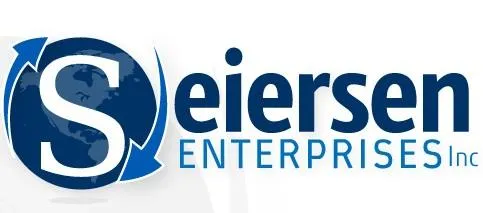
Welcome to Seiersen Enterprises
E
Enjoy our blogs here
Sustainable Supply Chain Value Through the Right Deals with the Right Trading Partners
Digitizing the Supply Chain
Check out my blogs on Linkedin: https://www.linkedin.com/in/nicholasseiersen/recent-activity/articles/
Trust & Trading Relationships

Where is the money going?
Spend analysis shows dispersion of spend across vendors of the same commodity, vendor qualification weeds out fragile companies, insalubrious associations, etc.
Spend analysis is a fundamental discipline that pays dividends every time. It highlights spend dispersion, non-compliance, even potential fraud. It helps you know who you depend on, to track their stability. And looking at the transaction profile shows that half of the transactions probably cost more to process than the value of the goods or services, so you must have a low value transaction strategy. This is the first step to driving robust procurement transformation. But it is also a discipline every procurement organization should be performing at least once a year.
Spend analysis also shows how much you are spending on each of your major spend categories, and with which suppliers. So there is a significant effort to define and agree a set of categories that are meaningful to the business, and classifying items and vendors into these categories. This analysis serves to develop tentative procurement strategies for each category, and these can be agreed with the major users inside the business. In my experience, this is rarely an effective dialogue, so the default strategies are cost reduction centric, which may not serve the business well. I recently came across the “Winning Hand” at Accenture, and this shows real promise to enrich the discussion with the user and align on relevant strategies. The tool draws on 48 different Total Value of Ownership strategies.
Many other tools exist, and each brings real value in the right circumstances: 5-Forces, SWOT, Kraljic, Harris' 8 stages, Kearney's chessboard, ...
The issue with these frameworks is that they are all power driven: how to leverage your power if you have it, and how to finesse it if you don't. In a later post I will address the greater opportunity of building a few trusting and collaborative relationships.
The final aspect that gets short shrift in most organizations is the analysis of risk of each proposed strategy, and the role suppliers can have in exacerbating or helping mitigate. An intelligent discussion on risk early on can shape a truly effective procurement, and make sure the right deal is struck with the right vendor. I use the framework illustrated here to tease out the right discussion.
Once high level sourcing priorities and strategies have been agreed, detailed spend analysis of specific categories usually requires data at a different level of granularity. At this point an agreed naming convention or category schema for each item in each category becomes very useful, particularly when consolidation must be made across different operations with similar consumption. The ECCMA not for profit association can help develop effective strategies for defining and implementing clean master data management. The bottoms-up analysis drives fact driven analysis that can validate or redirect the sourcing strategies and benefits sought.
Data Quality

Where is the money going?
Spend analysis shows dispersion of spend across vendors of the same commodity, vendor qualification weeds out fragile companies, insalubrious associations, etc.
Spend analysis is a fundamental discipline that pays dividends every time. It highlights spend dispersion, non-compliance, even potential fraud. It helps you know who you depend on, to track their stability. And looking at the transaction profile shows that half of the transactions probably cost more to process than the value of the goods or services, so you must have a low value transaction strategy. This is the first step to driving robust procurement transformation. But it is also a discipline every procurement organization should be performing at least once a year.
Spend analysis also shows how much you are spending on each of your major spend categories, and with which suppliers. So there is a significant effort to define and agree a set of categories that are meaningful to the business, and classifying items and vendors into these categories. This analysis serves to develop tentative procurement strategies for each category, and these can be agreed with the major users inside the business. In my experience, this is rarely an effective dialogue, so the default strategies are cost reduction centric, which may not serve the business well. I recently came across the “Winning Hand” at Accenture, and this shows real promise to enrich the discussion with the user and align on relevant strategies. The tool draws on 48 different Total Value of Ownership strategies.
Many other tools exist, and each brings real value in the right circumstances: 5-Forces, SWOT, Kraljic, Harris' 8 stages, Kearney's chessboard, ...
The issue with these frameworks is that they are all power driven: how to leverage your power if you have it, and how to finesse it if you don't. In a later post I will address the greater opportunity of building a few trusting and collaborative relationships.
The final aspect that gets short shrift in most organizations is the analysis of risk of each proposed strategy, and the role suppliers can have in exacerbating or helping mitigate. An intelligent discussion on risk early on can shape a truly effective procurement, and make sure the right deal is struck with the right vendor. I use the framework illustrated here to tease out the right discussion.
Once high level sourcing priorities and strategies have been agreed, detailed spend analysis of specific categories usually requires data at a different level of granularity. At this point an agreed naming convention or category schema for each item in each category becomes very useful, particularly when consolidation must be made across different operations with similar consumption. The ECCMA not for profit association can help develop effective strategies for defining and implementing clean master data management. The bottoms-up analysis drives fact driven analysis that can validate or redirect the sourcing strategies and benefits sought.
Other Supply Chain Topics

Where is the money going?
Spend analysis shows dispersion of spend across vendors of the same commodity, vendor qualification weeds out fragile companies, insalubrious associations, etc.
Spend analysis is a fundamental discipline that pays dividends every time. It highlights spend dispersion, non-compliance, even potential fraud. It helps you know who you depend on, to track their stability. And looking at the transaction profile shows that half of the transactions probably cost more to process than the value of the goods or services, so you must have a low value transaction strategy. This is the first step to driving robust procurement transformation. But it is also a discipline every procurement organization should be performing at least once a year.
Spend analysis also shows how much you are spending on each of your major spend categories, and with which suppliers. So there is a significant effort to define and agree a set of categories that are meaningful to the business, and classifying items and vendors into these categories. This analysis serves to develop tentative procurement strategies for each category, and these can be agreed with the major users inside the business. In my experience, this is rarely an effective dialogue, so the default strategies are cost reduction centric, which may not serve the business well. I recently came across the “Winning Hand” at Accenture, and this shows real promise to enrich the discussion with the user and align on relevant strategies. The tool draws on 48 different Total Value of Ownership strategies.
Many other tools exist, and each brings real value in the right circumstances: 5-Forces, SWOT, Kraljic, Harris' 8 stages, Kearney's chessboard, ...
The issue with these frameworks is that they are all power driven: how to leverage your power if you have it, and how to finesse it if you don't. In a later post I will address the greater opportunity of building a few trusting and collaborative relationships.
The final aspect that gets short shrift in most organizations is the analysis of risk of each proposed strategy, and the role suppliers can have in exacerbating or helping mitigate. An intelligent discussion on risk early on can shape a truly effective procurement, and make sure the right deal is struck with the right vendor. I use the framework illustrated here to tease out the right discussion.
Once high level sourcing priorities and strategies have been agreed, detailed spend analysis of specific categories usually requires data at a different level of granularity. At this point an agreed naming convention or category schema for each item in each category becomes very useful, particularly when consolidation must be made across different operations with similar consumption. The ECCMA not for profit association can help develop effective strategies for defining and implementing clean master data management. The bottoms-up analysis drives fact driven analysis that can validate or redirect the sourcing strategies and benefits sought.
Office: Sidney, BC
Canada
Call 647-299-8360
Email:nick@seierseninc.com
Site: www.seierseninc.com

